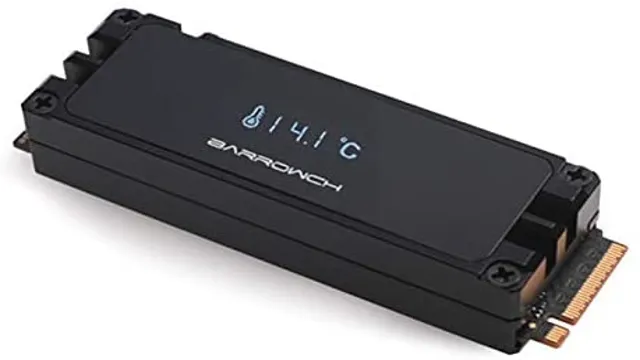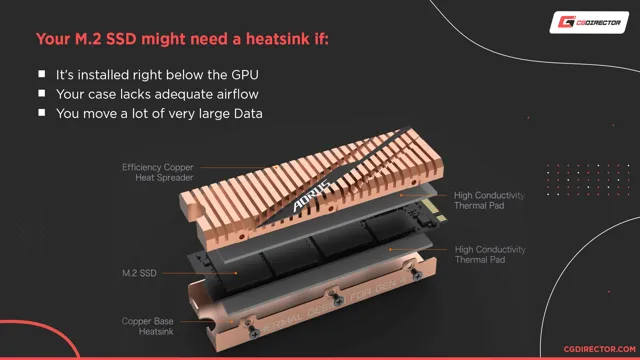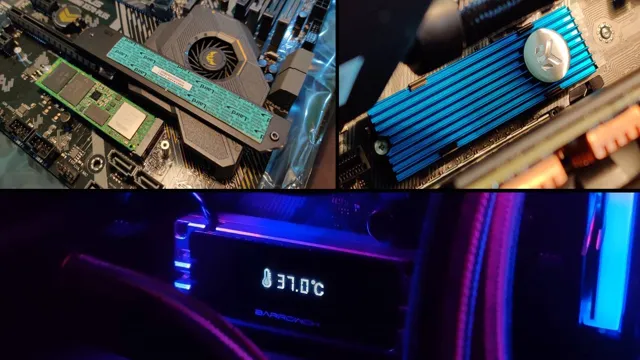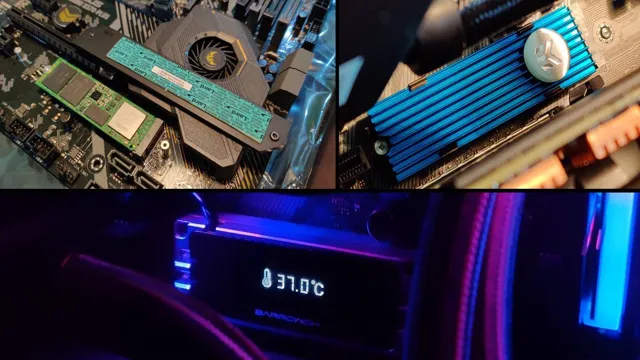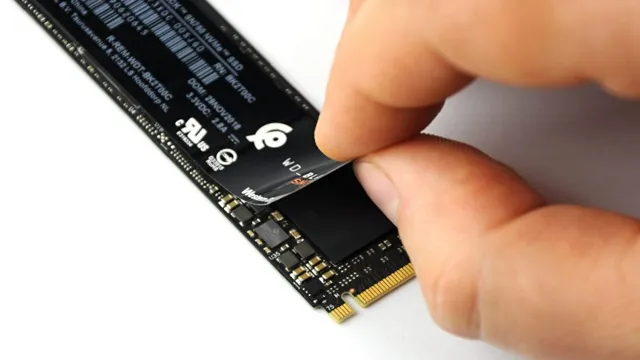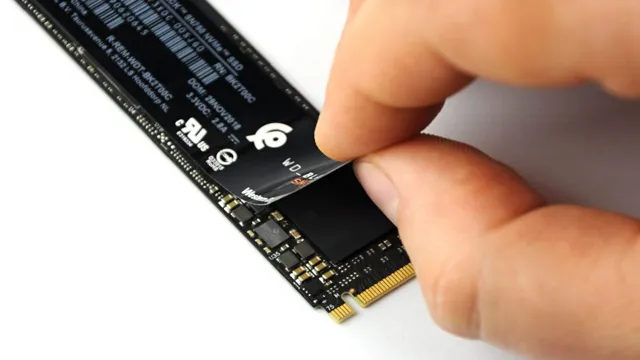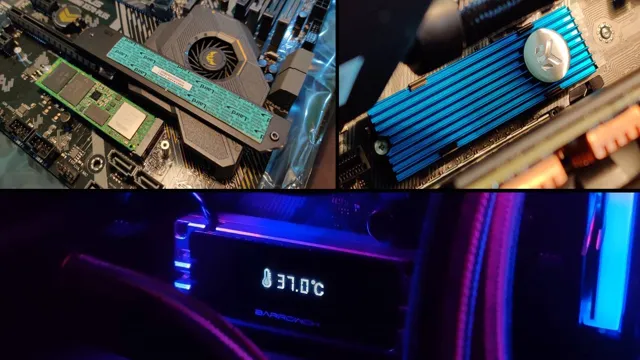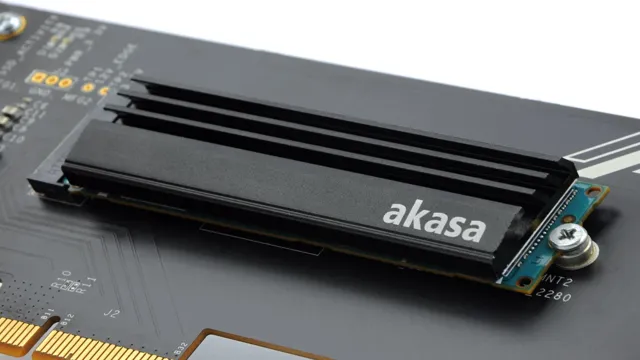Are you noticing that your M.2 SSD is getting a bit too hot for comfort? If so, you’re not alone. As high-speed SSDs become more prevalent in the world of computing, the heat they generate has become a significant concern.
Fortunately, there’s a solution: a heatsink. A heatsink is a small device that uses conduction to dissipate heat away from the M.2 SSD, preventing it from overheating and potentially causing damage.
With the right heatsink, you can improve your system’s performance and protect your investment at the same time. In this blog post, we’ll go over everything you need to know about getting the best heatsink for your M.2 SSD.
We’ll cover what heatsinks are, how they work, and what to look for when choosing one. So, if you want to keep your M.2 SSD cool and working to its full potential, keep reading!
What is a Heatsink?
If you’re wondering whether or not you need a heatsink for your M.2 SSD, the answer is not straightforward. First, let’s define what a heatsink is.
Essentially, it’s a metal component that dissipates heat away from a device, such as a computer component, to prevent overheating. With M.2 SSDs, some models may run hotter than others depending on the brand and capacity.
In most cases, a heatsink may not be necessary for typical users who do not utilize their computer for heavy tasks such as gaming or video editing. However, if you plan on intensive use of your M.2 SSD, a heatsink may be beneficial in prolonging the lifespan of your component.
It’s best to check the manufacturer’s recommendations and user reviews to determine whether or not a heatsink is necessary for your specific M.2 SSD.
Explanation & Function
A heatsink is a component used in electronic devices to dissipate heat generated by the device’s components. When electronic devices operate, they generate heat, and if the heat is not dissipated effectively, it can damage the device’s components, leading to reduced performance and even malfunction. Heatsinks work by increasing the surface area available for heat dissipation.
They consist of a large surface area with fins or ridges that can absorb the heat generated by the device and dissipate it through convection or radiation. Heatsinks are commonly used in central processing units (CPUs), graphics processing units (GPUs), and voltage regulators to prevent overheating. They come in different shapes and sizes, but the most common heatsink is made of aluminum, which is a good conductor of heat.
Some heatsinks also have fans to facilitate heat dissipation, which is known as an active heatsink. Therefore, a heatsink is a crucial component in electronic devices to ensure optimum performance and prevent damage due to overheating.
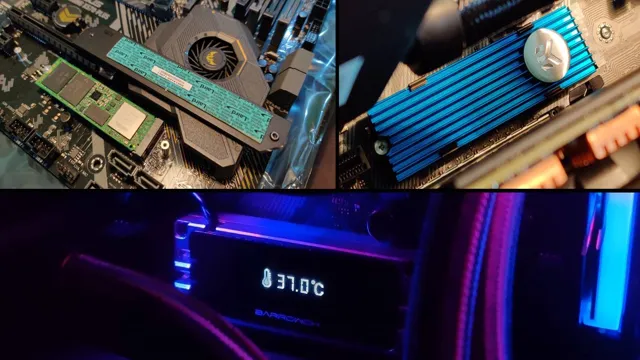
Do M.2 SSDs Need Heatsinks?
Many people wonder if M.2 SSDs need heatsinks. The answer is, it depends on how you use your SSD.
If you only use it for basic tasks like browsing the internet or using productivity software, then you don’t need a heatsink. However, if you are a gamer or use your SSD for heavy workloads such as video editing or rendering, then a heatsink may help prevent the SSD from overheating and ensure optimal performance. Think of it like a car engine – if you only drive your car around town, you don’t need a high-performance cooling system.
But if you take your car on the race track, you need a robust cooling system to prevent overheating. So, while you may not need a heatsink for everyday use, it can certainly be beneficial for more intensive tasks.
Temperature Comparison Data
M.2 SSDs, heatsinks, temperature, comparison data If you’ve been researching M.2 SSDs, you may have come across conflicting information regarding whether or not they require heatsinks.
Some sources claim that heatsinks are necessary to prevent overheating and maintain performance, while others argue that they’re unnecessary and may even interfere with heat dissipation. So, do M.2 SSDs really need heatsinks? The answer may depend on the specific SSD and how it’s being used.
While some M.2 SSDs may run hot, others may be designed to operate efficiently without a heatsink. It’s important to consider the temperature comparison data for the particular SSD you’re using, as well as the workload you’ll be subjecting it to.
If you plan to use your SSD for demanding tasks like video editing or gaming, it’s possible that a heatsink could help keep temperatures in check. However, if you’re using your SSD for more casual applications, a heatsink might not be necessary. Ultimately, it’s always a good idea to monitor your SSD’s temperatures and adjust your cooling solutions as needed to ensure optimal performance and longevity.
Benefits of Using Heatsinks
When it comes to using an m.2 SSD, you may wonder if you need a heatsink to keep it running at optimal temperatures. The answer is yes! A heatsink is a crucial component that helps dissipate heat from the SSD, preventing it from overheating and potentially causing performance issues.
By keeping your SSD cool, you can ensure that it runs smoothly and lasts longer. Heatsinks also offer additional benefits, such as improving the aesthetic of your build and reducing noise from your system’s fans. Although not always necessary, a heatsink is a simple and affordable upgrade that can greatly benefit your system’s performance.
So if you’re looking to boost your system’s overall performance, consider adding a heatsink to your m.2 SSD.
Longevity of SSD & Performance Improvement
Solid State Drives (SSD) are known for their faster read and write speeds, but they also have a limited lifespan which can affect their performance over time. One way to improve the longevity of SSDs is by using heatsinks. Heatsinks are designed to dissipate heat away from the SSD, which can reduce the risk of overheating and prolong its lifespan.
In addition to improving the lifespan of SSDs, heatsinks can also improve their overall performance. By cooling the NAND flash chips inside of the SSD, the heatsink can prevent thermal throttling and allow the SSD to maintain peak performance for longer periods. The result is a faster and more reliable SSD that can endure intense workloads without slowing down.
Overall, using heatsinks is a simple and effective way to optimize the performance and longevity of your SSD.
Types of Heatsinks for M.2 SSDs
If you’re wondering whether you need a heatsink for your M.2 SSD, the answer is not straightforward as it depends on various factors such as the size and type of the SSD, the workload, and the cooling system in your PC. For instance, if you have a high-performance M.
2 SSD that is regularly exposed to heavy workloads such as gaming, video editing, or file compression, installing a heatsink might help dissipate the heat produced and prevent thermal throttling, which can hurt the SSD’s performance. However, if your workload is relatively light and your PC has efficient cooling systems, a heatsink might not add significant value or might even hinder airflow. There are different types of heatsinks available, including adhesive heatsinks, clip-on heatsinks, and custom-designed heatsinks, so you can choose the one that fits your SSD and budget.
Nevertheless, before installing a heatsink, make sure to check the manufacturer’s recommendations and consult with experts if needed, as some SSDs might void the warranty if the heatsink is installed incorrectly or uses incompatible materials. Overall, while a heatsink is not mandatory for all M.2 SSDs, it can be a worthwhile investment if you prioritize performance and stability.
Heatsink Design & Compatibility
When it comes to keeping your M.2 SSD cool, a heatsink is a worthy investment. Heatsinks come in various shapes and sizes, and their design can impact their compatibility with different M.
2 SSDs. One type of heatsink that is becoming increasingly popular is the finned heatsink. As the name suggests, these heatsinks have thin fins that help dissipate heat more effectively.
However, their design means that they may not be compatible with all M.2 SSDs, particularly those that have components on both sides of the PCB. In such cases, a heatsink with a flat base may be a better choice, as it can provide even cooling across both sides of the SSD.
Ultimately, the type of heatsink that you choose will depend on your SSD, your build, and your personal preferences. But no matter what type of heatsink you opt for, it’s important to ensure that it’s compatible with your specific M.2 SSD to ensure the best possible cooling performance.
Conclusion
In the end, it all comes down to your personal preference and usage habits. If you’re a heavy user who does a lot of data transfer, it might be worth investing in a heatsink to keep your M.2 SSD running smoothly.
But for everyday use and normal temperatures, saving your money and skipping the heatsink won’t be detrimental. Just keep in mind that while SSDs don’t generate as much heat as other components, it’s always better to err on the side of caution and keep your hardware cool – after all, no one likes a hot-headed computer.”
Making the Right Choice for Your M.2 SSD
When it comes to optimizing your storage performance, an M.2 SSD is a fantastic choice. But if you’re looking to push the envelope, you might want to consider a heatsink to keep your M.
2 SSD cool under heavy use. There are two primary types of M.2 SSD heatsinks: passive and active.
Passive heatsinks are simply metal blocks or fins that attach to the drive and dissipate heat. Active heatsinks, on the other hand, use a small fan to push air over the drive to achieve even better cooling. Which one is right for you depends on your system setup and usage patterns.
If you have adequate airflow in your case and don’t push your M.2 SSD too hard, a passive heatsink should suffice. But if you’re constantly pushing your drive to its limits, an active heatsink might be the better choice.
Either way, a heatsink is a great investment if you want to get the most out of your M.2 SSD.
FAQs
What is a heatsink?
A heatsink is a component that helps dissipate heat from a device, preventing it from overheating.
Is a heatsink necessary for an M.2 SSD?
It depends on the usage. If you are performing intensive tasks such as gaming or video editing, then a heatsink may be necessary to prevent the M.2 SSD from overheating. However, for general usage, it may not be necessary.
Can I use any heatsink for my M.2 SSD?
No, you need to make sure the heatsink is compatible with your M.2 SSD. It is best to consult the manufacturer’s specifications to ensure compatibility.
How do I install a heatsink on my M.2 SSD?
The installation process may vary depending on the heatsink and SSD model. It is best to consult the manufacturer’s instructions to ensure proper installation. Typically, the heatsink will attach to the M.2 SSD with screws or thermal adhesive.
